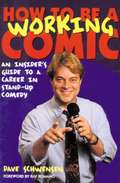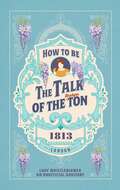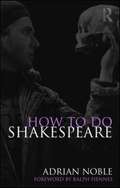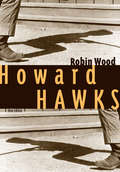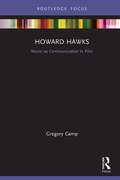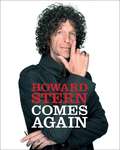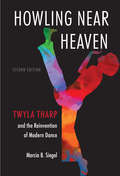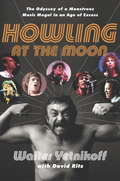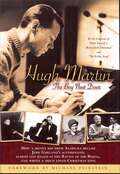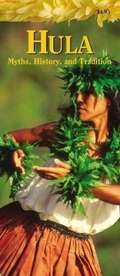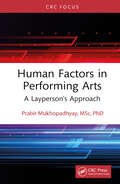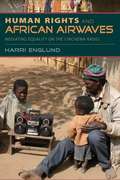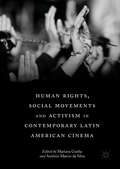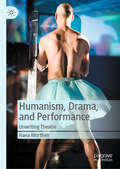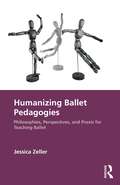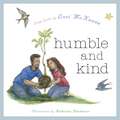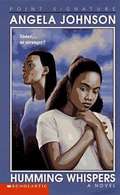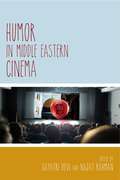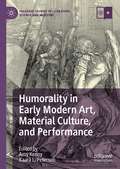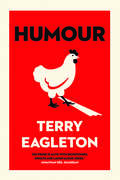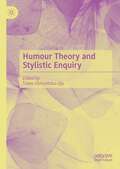- Table View
- List View
How to be a Working Comic: An Insider's Guide to a Career in Stand-Up Comedy
by Dave SchwensenGetting ahead in stand-up comedy means having an original slant on things. Many books and comedy classes offer "secrets" and "formulas" intended to make the aspiring comic a big success. In How to Be a Working Comic, author Dave Schwensen points out that the performers who are in demand never follow the same path--and neither should you if you want to excel in this demanding, competitive profession. Offering more insiders' advice than any other manual, this book shows you how to try out material; get onstage experience; market your act to talent bookers, agents, and managers; go on the road; get on television, and much more. Supplementing the author's own expertise are his interviews with more than sixteen proven talents, including Drew Carey, Carrot Top, Jeff Foxworthy, and Tommy Smothers--all of whom embody the qualities of originality, career know-how, and laughter. Schwensen assumes you already believe you're funny enough to tackle a comedy career. Making sure you develop a comic vision that's completely your own is the essential lesson in starting out in the exciting but crowded field of stand-up comedy.
How to be the Talk of the Ton: & Be The Talk Of The Ton
by Lady WhistleblowerShall we promenade? Dear Reader,Welcome to the definitive guide to navigating the social season. Learn about etiquette in all its forms. Within these abundant leaves you will be gifted with all the instruction and patronage necessary to take your place in society. Sort your Dandies from your Rakes, your Merry Andrews from your Bucks. All of the menagerie of beau monde's are contained within. So read on dearest reader and bury oneself in the pool of knowledge that will equip oneself to become the talk of the ton.Yours sincerelyLady Whistleblower
How to do Shakespeare
by Adrian NobleThe author has worked on Shakespeare with everyone from Oscar-nominated actors to groups of schoolchildren. Here he draws on several decades of top-level directing experience to shed new light on how to bring some of theatre’s seminal texts to life. <p><p> He shows you how to approach the perennial issues of performing Shakespeare, including: wordplay – using colour and playing plain, wit and comedy, making language muscular; building a character – different strategies, using the text, Stanislavski and Shakespeare; shape and structure – headlining a speech, playing soliloquys, determining a speech’s purpose and letting the verse empower you; dialogue – building tension, sharing responsibility and ’passing the ball’. <p><p> This guided tour of Shakespeare’s complex but unfailingly rewarding work stunningly combines instruction and inspiration.
Howard Hawks
by Robin WoodA significant and contemporary study of director Howard Hawks by influential film critic Robin Wood, reprinted with a new introduction.
Howard Hawks: Music as Communication in Film (Filmmakers and Their Soundtracks)
by Gregory CampKnown for creating classic films including His Girl Friday, The Big Sleep, Bringing Up Baby, and Gentlemen Prefer Blondes, Howard Hawks is one of the best-known Hollywood ‘auteurs’, but the important role that music plays in his films has been generally neglected by film critics and scholars. In this concise study, Gregory Camp demonstrates how Hawks' use of music and musical treatment of dialogue articulate the group communication that is central to his films. In five chapters, Camp explores how the notion of 'music' in Hawks' films can be expanded beyond the film score, and the techniques by which Hawks and his collaborators (including actors, screenwriters, composers, and editors) achieve this heightened musicality.
Howard Hawks: The Grey Fox of Hollywood
by Todd McCarthyHoward Hawks is the first major biography of one of Hollywood's greatest directors, a filmmaker of incomparable versatility whose body of work includes the landmark gangster film Scarface, screwball comedies like Bringing Up Baby and His Girl Friday, the Bogart-Bacall classics To Have and Have Not and The Big Sleep, the musical Gentlemen Prefer Blondes, and aviation classics and Westerns like The Dawn Patrol and Rio Bravo. Sometime partner of the eccentric Howard Hughes, drinking buddy of William Faulkner and Ernest Hemingway, an inveterate gambler and a notorious liar, Hawks was the most modern of the great masters and one of the first directors to declare his independence from the major studios. He played Svengali to Lauren Bacall, Montgomery Clift, and others, but Hawks's greatest creation may have been himself. As The Atlantic Monthly noted, "Todd McCarthy . . . has gone further than anyone else in sorting out the truths and lies of the life, the skills and the insight and the self-deceptions of the work." "A fluent biography of the great director, a frequently rotten guy but one whose artistic independence and standards of film morality never failed." — The New York Times Book Review; "Hawks's life, until now rather an enigma, has been put into focus and made one with his art in Todd McCarthy's wise and funny Howard Hawks." — The Wall Street Journal; "Excellent . . . a respectful, exhaustive, and appropriately smartass look at Hollywood's most versatile director." — Newsweek.
Howard Stern Comes Again
by Howard SternRock stars and rap gods. Comedy legends and A-list actors. Supermodels and centerfolds. Moguls and mobsters. A president. Over his unrivaled four-decade career in radio, Howard Stern has interviewed thousands of personalities—discussing sex, relationships, money, fame, spirituality, and success with the boldest of bold-faced names. But which interviews are his favorites? It’s one of the questions he gets asked most frequently. Howard Stern Comes Again delivers his answer. This book is a feast of conversation and more, as between the lines Stern offers his definitive autobiography—a magnum opus of confession and personal exploration. Tracy Morgan opens up about his near-fatal car crash. Lady Gaga divulges her history with cocaine. Madonna reminisces on her relationship with Tupac Shakur. Bill Murray waxes philosophical on the purpose of life. Jerry Seinfeld offers a master class on comedy. Harvey Weinstein denies the existence of the so-called casting couch. An impressive array of creative visionaries weigh in on what Stern calls “the climb”—the stories of how they struggled and eventually prevailed. As he writes in the introduction, “If you’re having trouble finding motivation in life and you’re looking for that extra kick in the ass, you will find it in these pages.” Interspersed throughout are rare selections from the Howard Stern Show archives with Donald Trump that depict his own climb: transforming from Manhattan tabloid fixture to reality TV star to president of the United States. Stern also tells of his Moby Dick-like quest to land an interview with Hillary Clinton in the run-up to the 2016 election—one of many newly written revelations from the author. He speaks with extraordinary candor about a variety of subjects, including his overwhelming insecurity early in his career, his revolutionary move from terrestrial radio to SiriusXM, and his belief in the power of psychotherapy. As Stern insightfully notes in the introduction: “The interviews collected here represent my best work and show my personal evolution. But they don’t just show my evolution. Gathered together like this, they show the evolution of popular culture over the past quarter century.”
Howard Stern Comes Again
by Howard SternOver his unrivaled four-decade career in radio, Howard Stern has interviewed thousands of personalities—discussing sex, relationships, money, fame, spirituality, and success with the boldest of bold-faced names. But which interviews are his favorites? It&’s one of the questions he gets asked most frequently. Howard Stern Comes Again delivers his answer.Rock stars and rap gods. Comedy legends and A-list actors. Supermodels and centerfolds. Moguls and mobsters. A president. This book is a feast of conversation and more, as between the lines Stern offers his definitive autobiography—a magnum opus of confession and personal exploration. Tracy Morgan opens up about his near-fatal car crash. Lady Gaga divulges her history with cocaine. Madonna reminisces on her relationship with Tupac Shakur. Bill Murray waxes philosophical on the purpose of life. Jerry Seinfeld offers a master class on comedy. Harvey Weinstein denies the existence of the so-called casting couch. An impressive array of creative visionaries weigh in on what Stern calls &“the climb&”—the stories of how they struggled and eventually prevailed. As he writes in the introduction, &“If you&’re having trouble finding motivation in life and you&’re looking for that extra kick in the ass, you will find it in these pages.&” Interspersed throughout are rare selections from the Howard Stern Show archives with Donald Trump that depict his own climb: transforming from Manhattan tabloid fixture to reality TV star to president of the United States. Stern also tells of his Moby Dick-like quest to land an interview with Hillary Clinton in the run-up to the 2016 election—one of many newly written revelations from the author. He speaks with extraordinary candor about a variety of subjects, including his overwhelming insecurity early in his career, his revolutionary move from terrestrial radio to SiriusXM, and his belief in the power of psychotherapy. As Stern insightfully notes in the introduction: &“The interviews collected here represent my best work and show my personal evolution. But they don&’t just show my evolution. Gathered together like this, they show the evolution of popular culture over the past quarter century.&”
Howling Near Heaven: Twyla Tharp and the Reinvention of Modern Dance
by Marcia B. SiegelFor more than five decades, Twyla Tharp has been a phenomenon in American dance, a choreographer who not only broke the rules but refused to repeat her own successes. Tharp has made movies, television specials, and nearly one hundred riveting dance works. Her dance show Movin’ Out ran on Broadway for three years and won Tharp a Tony award for Best Choreography. Howling Near Heaven is the only in-depth study of Twyla Tharp’s unique, restless creativity. This second edition features a new forward that brings the account of Tharp’s work up to date and discusses how dance and dance-making in the United States have changed in recent years. This is the story of a choreographer who refused to be pigeonholed and the dancers who accompanied her as she sped across the frontiers of dance.
Howling at the Moon: The Odyssey of a Monstrous Music Mogul in an Age of Excess
by Walter Yetnikoff David RitzShow biz memoir at its name-dropping, bridge-burning, profane best: the music industry&’s most outspoken, outrageous, and phenomenally successful executive delivers a rollicking memoir of pop music&’s heyday.During the 1970s and '80s the music business was dominated by a few major labels and artists such as Michael Jackson, Bruce Springsteen, the Rolling Stones, Bob Dylan, Billy Joel, Paul Simon, Barbra Streisand and James Taylor. They were all under contract to CBS Records, making it the most successful label of the era. And, as the company&’s president, Walter Yetnikoff was the ruling monarch. He was also the most flamboyant, volatile and controversial personality to emerge from an industry and era defined by sex, drugs and debauchery. Having risen from working-class Brooklyn and the legal department of CBS, Yetnikoff, who freely admitted to being tone deaf, was an unlikely label head. But he had an uncanny knack for fostering talent and intimidating rivals with his appalling behavior—usually fueled by an explosive combination of cocaine and alcohol. His tantrums, appetite for mind-altering substances and sexual exploits were legendary. In Japan to meet the Sony executives who acquired CBS during his tenure, Walter was assigned a minder who confined him to a hotel room. True to form, Walter raided the minibar, got blasted and, seeing no other means of escape, opened a hotel window and vented his rage by literally howling at the moon. In Howling at the Moon, Yetnikoff traces his journey as he climbed the corporate mountain, danced on its summit and crashed and burned. We see how Walter became the father-confessor to Michael Jackson as the King of Pop reconstructed his face and agonized over his image while constructing Thriller (and how, after it won seven Grammies, Jackson made the preposterous demand that Walter take producer Quincy Jones&’s name off the album); we see Walter, in maniacal pursuit of a contract, chase the Rolling Stones around the world and nearly come to blows with Mick Jagger in the process; we get the tale of how Walter and Marvin Gaye—fresh from the success of &“Sexual Healing&”—share the same woman, and of how Walter bonds with Bob Dylan because of their mutual Jewishness. At the same time we witness Yetnikoff&’s clashes with Barry Diller, David Geffen, Tommy Mottola, Allen Grubman and a host of others. Seemingly, the more Yetnikoff feeds his cravings for power, sex, liquor and cocaine, the more profitable CBS becomes—from $485 million to well over $2 billion—until he finally succumbs, ironically, not to substances, but to a corporate coup. Reflecting on the sinister cycle that left his career in tatters and CBS flush with cash, Yetnikoff emerges with a hunger for redemption and a new reverence for his working-class Brooklyn roots.Ruthlessly candid, uproariously hilarious and compulsively readable, Howling at the Moon is a blistering You&’ll Never Eat Lunch in this Town Again of the music industry.
Hugh Martin: The Boy Next Door
by Hugh MartinThis book is an enchanting jaunt through the Golden Era of Broadway and the MGM musicals. This firsthand account captures the energy and excitement of those special times, with eyewitness tales of Mickey Rooney and Judy Garland, Gene Kelly, and dozens more. Hugh recounts the origins of some of America's most beloved songs, including the perennial favorite, "Have Yourself a Merry Little Christmas." Martin also reveals some secrets that only he could know: the truth about his composition partner Ralph Blane, his addiction to the infamous Dr. Feelgood, Max Jacobson; how he was instrumental in turning Gene Kelly from a performer to a choreographer during the staging of Best Foot Forward; and what it was really like to be part of the MGM musical production machine. <p><p> As Hugh enters his 96th year, this could be America's last chance to hear these stories from a living source. They are full of his signature charm, grace, musicality, and poeticism.
Hula Girl (Adventures in Hawaii)
by Gaël MustaphaYoung Kehau loves hula and learning about her Hawaiian culture. But is she ready for her biggest challenge: to bring honor to her halau and kumu in the annual Miss Keiki Hula Competition?
Human Factors in Performing Arts: A Layperson's Approach
by PRABIR MUKHOPADHYAYThis captivating book explores the intersection where performing art meets human interaction and delves into the application of human factors’ principles in this field. From music and theatre to cinema and magic shows, indoor and outdoor performances are analyzed from a human factors perspective. Written in an accessible language, this book offers a comprehensive overview of how human factors influence various facets of the performing arts, enriching the experience for both performers and audiences alike.This book uncovers how human factors principles can enhance performance across script writing, stage design, crowd engagement, and more. Through engaging storytelling and practical examples, readers will learn about the intricacies of audience attention, ambience creation, and the importance of feedback in shaping memorable performances. Whether you're a seasoned professional or an aspiring events manager looking to enhance the user experience, this book provides valuable insights into optimizing the human experience within the realm of performing arts making it safe and memorable for all.Ideal for professionals in human factors, occupational health and safety, as well as those working in the performing arts industry, Human Factors in Performing Arts: A Layperson's Approach serves as a valuable resource for theatre managers, event organizers, and anyone involved in orchestrating small or large-scale performances. With its blend of theory and real-world application, it offers a fresh perspective on human factors and the art of entertainment, making it essential reading for anyone passionate about elevating their craft.
Human Rights and African Airwaves: Mediating Equality on the Chichewa Radio
by Harri EnglundHuman Rights and African Airwaves focuses on Nkhani Zam'maboma, a popular Chichewa news bulletin broadcast on Malawi's public radio. The program often takes authorities to task and questions much of the human rights rhetoric that comes from international organizations. Highlighting obligation and mutual dependence, the program expresses, in popular idioms and local narrative forms, grievances and injustices that are closest to Malawi's impoverished public. Harri Englund reveals broadcasters' everyday struggles with state-sponsored biases and a listening public with strong views and a critical ear. This fresh look at African-language media shows how Africans effectively confront inequality, exploitation, and poverty.
Human Rights, Social Movements and Activism in Contemporary Latin American Cinema
by Antônio Márcio da Silva Mariana CunhaThis edited collection explores how contemporary Latin American cinema has dealt with and represented issues of human rights, moving beyond many of the recurring topics for Latin American films. Through diverse interdisciplinary theoretical and methodological approaches, and analyses of different audiovisual media from fictional and documentary films to digitally-distributed activist films, the contributions discuss the theme of human rights in cinema in connection to various topics and concepts. Chapters in the volume explore the prison system, state violence, the Mexican dirty war, the Chilean dictatorship, debt, transnational finance, indigenous rights, social movement, urban occupation, the right to housing, intersectionality, LGBTT and women’s rights in the context of a number of Latin American countries. By so doing, it assesses the long overdue relation between cinema and human rights in the region, thus opening new avenues to aid the understanding of cinema’s role in social transformation.
Humanism, Drama, and Performance: Unwriting Theatre
by Hana WorthenThis book examines the appropriation of theatre and theatrical performance by ideologies of humanism, in terms that continue to echo across the related disciplines of literary, drama, theatre, and performance history and studies today. From Aristotle onward, theatre has been regulated by three strains of critical poiesis: the literary, segregating theatre and the practices of the spectacular from the humanizing work attributed to the book and to the internality of reading; the dramatic, approving the address of theatrical performance only to the extent that it instrumentalizes literary value; and the theatrical, assimilating performance to the conjunction of literary and liberal values. These values have been used to figure not only the work of theatre, but also the propriety of the audience as a figure for its socializing work, along a privileged dualism from the aestheticized ensemble—harmonizing actor, character, and spectator to the essentialized drama—to the politicized assembly, theatre understood as an agonistic gathering.
Humanizing Ballet Pedagogies: Philosophies, Perspectives, and Praxis for Teaching Ballet
by Jessica ZellerIn Humanizing Ballet Pedagogies, Jessica Zeller offers a new take on the ballet pedagogy manual, examining how and why ballet pedagogies develop, considering their implications for students and teachers, and proposing processes by which readers can enact humanizing, equitable approaches.This book supports pedagogical thinking and development in ballet. Across three parts, it reflects how pedagogies come to be: through rationales, dialogues, and practices. Part 1, Philosophies, offers a contextual reading of ballet pedagogy’s historic relationship to ideals, and it describes an alternative approach that takes its meaningful purpose from the embodied knowledge of participants in the ballet class. Part 2, Perspectives, looks at how the teacher’s person shapes the ballet class. It draws from a new survey of ballet students that illuminates the direct effects of pedagogies and proposes future directions. Praxis, Part 3, includes three theoretically based approaches that can be applied directly or adjusted to readers’ contexts for teaching ballet: yielding to student agency and autonomy, ungrading graded ballet classes in higher education, and practicing reflection for growth. Grounded in the wide range of people who participate in ballet, themes of equity, ethics, and humanity are at the heart of this book.Humanizing Ballet Pedagogies is a valuable resource for those teaching or developing a teaching approach in ballet. It addresses important issues for school owners, administrators, or anyone responsible for supporting ballet teachers or students in the twenty-first century.
Humble and Kind: A Children's Picture Book (LyricPop #0)
by Lori McKennaAward-winning songwriter Lori McKenna's iconic song--as popularized by Tim McGraw--is the perfect basis for a picture book that celebrates family and togetherness. Hold the door, say please, say thank you Don't steal, don't cheat, and do
Humble and Kind: A Children's Picture Book (LyricPop)
by Lori McKennaAward-winning songwriter Lori McKenna’s iconic song—as popularized by Tim McGraw—is the perfect basis for a picture book that celebrates family and togetherness. One of Kirkus Reviews' 50 Most Anticipated Books of 2021 “Children will feel reassured by the sentiments within this expressive extension of the music, and a sweet daydream of a picture book. ” —School Library Journal "Hold the door, say please, say thank you Don’t steal, don’t cheat, and don’t lie I know you got mountains to climb but Always stay humble and kind . . ." Humble and Kind is a picture book based on Lori McKenna’s song, popularized by Tim McGraw. McKenna later recorded the song on her ninth studio album, The Bird and the Rifle. Lovingly illustrated by Katherine Blackmore, this gentle picture book tells the story of a family who is striving to remain humble and kind. We follow the family through their daily lives as they find different ways to lend a hand to each other and to their broader community. Full of touching scenes of familial relationships, Humble and Kind will teach adults and children alike the power of family while introducing them to this beautiful song.
Humming Whispers
by Angela JohnsonNicole was only fourteen when she first started to hear the voices. Voices that only she can hear. Voices that will never, ever go away. Now Sophy is fourteen. And she's afraid she'll end up like her older sister. That the whispers will start to call to her. That they'll make her do crazy things. That people will treat her the way they do Nicole. But the old saying about blood being thicker than water is very true. And no matter how hard she tries to look the other way, Sophy knows her sister will always be a very important part of her life. No matter what ...
Humor in Middle Eastern Cinema
by Gayatri Devi Najat RahmanWhile Middle Eastern culture does not tend to be associated with laughter and levity in the global imagination, humor--often satirical--has long been a staple of mainstream Arabic film. In Humor in Middle Eastern Cinema, editors Gayatri Devi and Najat Rahman shed light on this tradition, as well as humor and laughter motivated by other intent--including parody, irony, the absurd, burlesque, and dark comedy. Contributors trace the proliferation of humor in contemporary Middle Eastern cinema in the works of individual directors and from the perspectives of genre, national cinemas, and diasporic cinema. Humor in Middle Eastern Cinema explores what humor theorists have identified as an "emancipatory," "liberatory," even "revolutionary" function to humor. Among the questions contributors ask are: How does Middle Eastern cinema and media highlight the stakes and place of humor in art and in life? What is its relation to the political? Can humor in cinematic art be emancipatory? What are its limits for its intervention or transformation? Contributors examine the region's masterful auteurs, such as Abbas Kiarostami, Youssef Chahine, and Elia Suleiman and cover a range of cinematic settings, including Egypt, Iran, Israel, Lebanon, Palestine, Syria, Tunisia, and Turkey. They also trace diasporic issues in the distinctive cinema of India and Pakistan. This insightful collection will introduce readers to a variety of contemporary Middle Eastern cinema that has attracted little critical notice. Scholars of cinema and media studies as well as Middle Eastern cultural history will appreciate this introduction to a complex and fascinating cinema.
Humorality in Early Modern Art, Material Culture, and Performance (Palgrave Studies in Literature, Science and Medicine)
by Kaara L. Peterson Amy KennyHumorality in Early Modern Art, Material Culture, and Performance seeks to address the representation of the humors from non-traditional, abstract, and materialist perspectives, considering the humorality of everyday objects, activities, and performance within the early modern period. To uncover how humoralism shapes textual, material, and aesthetic encounters for contemporary subjects in a broader sense than previous studies have pursued, the project brings together three principal areas of investigation: how the humoral body was evoked and embodied within the space of the early modern stage; how the materiality of an object can be understood as constructed within humoral discourse; and how individuals’ activities and pursuits can connote specific practices informed by humoralism. Across the book, contributors explore how diverse media and cultural practices are informed by humoralism. As a whole, the collection investigates alternative humoralities in order to illuminate both early modern works of art as well as the cultural moments of their production.
Humour
by Terry EagletonA compelling guide to the fundamental place of humour and comedy within Western culture—by one of its greatest exponents Written by an acknowledged master of comedy, this study reflects on the nature of humour and the functions it serves. Why do we laugh? What are we to make of the sheer variety of laughter, from braying and cackling to sniggering and chortling? Is humour subversive, or can it defuse dissent? Can we define wit? Packed with illuminating ideas and a good many excellent jokes, the book critically examines various well-known theories of humour, including the idea that it springs from incongruity and the view that it reflects a mildly sadistic form of superiority to others. Drawing on a wide range of literary and philosophical sources, Terry Eagleton moves from Aristotle and Aquinas to Hobbes, Freud, and Bakhtin, looking in particular at the psychoanalytical mechanisms underlying humour and its social and political evolution over the centuries.
Humour Theory and Stylistic Enquiry
by Taiwo Oloruntoba-OjuThis edited book brings together scholarly chapters on linguistic aspects of humour in literary and non-literary domains and contexts in different parts of the world. Previous scholarly engagements and theoretical postulations on humour and the comic provide veritable resources for reexamining the relationship between linguistic elements and comic sensations on the one hand, and the validity of interpretive humour stylistics on the other hand. Renowned Stylistics scholars, such as Michael Toolan, who writes the volume’s foreword against the backdrop of nearly four decades of scholarly engagement with stylistics, and Katie Wales, who in this volume engages with Charles Dickens, one of the most eminent satirists in English literature, as well as many other European and African authors who have worked ceaselessly in the area of humour and language, weigh in on the topic of language and humour in this volume. Together, they provide a variety of interesting perspectives on the topic, deploying different textual sources from different media and from different regions of the world. Part of the book’s offering includes integrative stylistic approaches to humour in African, European and American written texts, examinations of social media and political humour in Nigeria, Cameroon and Zimbabwe, pragmatics and humorous stance-taking, incongruity as comedy in works of fiction, and a unified levels of linguistic analysis approach to the investigation of humour. This book will be of interest to academics and students of Linguistics, Stylistics, Communications and Media Studies, and Humour Studies. Taiwo Oloruntoba-Oju is a Professor in the Department of English at the University of Ilorin in Nigeria
